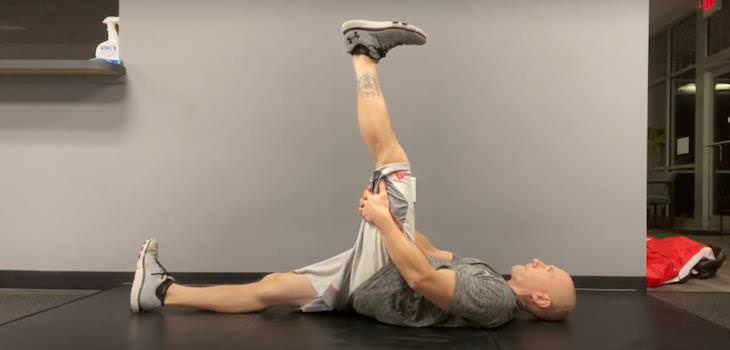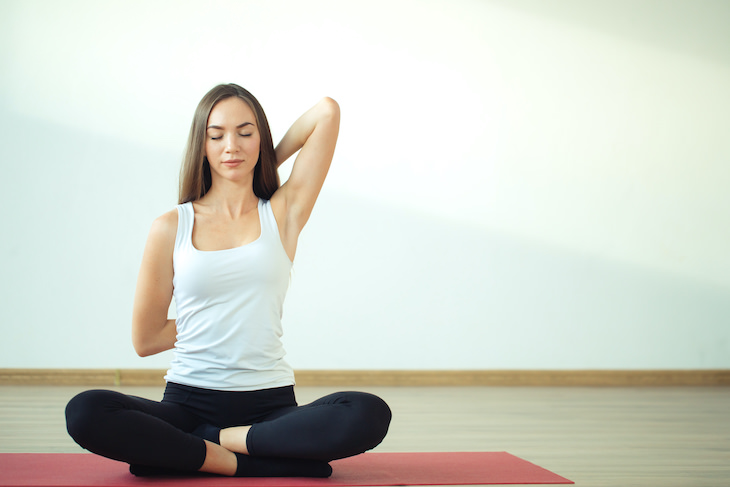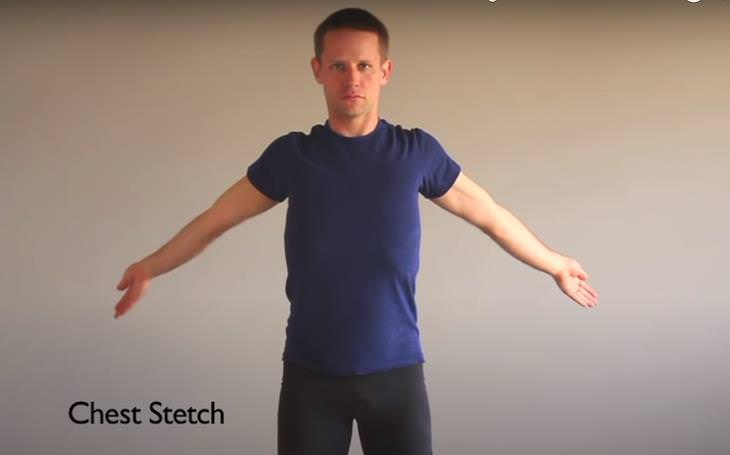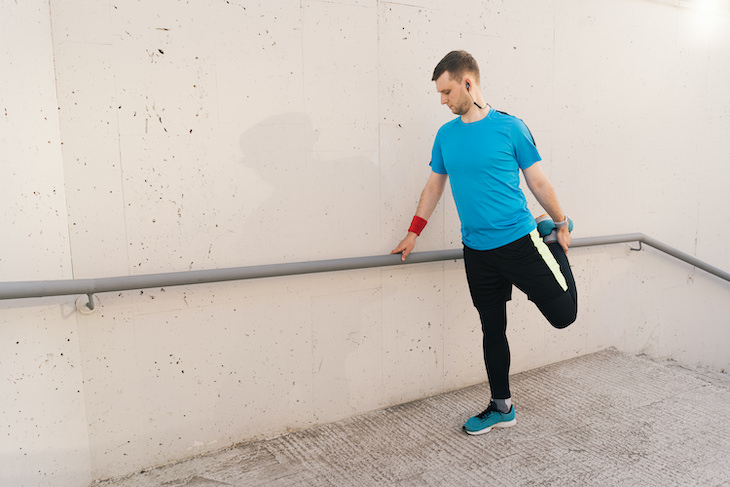
What is active stretching?
To understand what active stretching is, and how it differs from passive stretching, it’s important to differentiate the agonist and antagonist muscles. These two terms describe the muscles that provide force when a motion is conducted, whether it’s simply walking or a more rigorous physical activity like squats for example. The agonist is a muscle that contracts to cause the movement. The antagonist is an opposing muscle that relaxes relatively to stretch. Depending on the movement, certain muscles will play the role of agonists while the others will function as antagonists.
Related: 14 Explained Stretches for Pain Relief

Active stretching can be defined as using agonist muscles to relax and stretch the opposing muscles (antagonist muscles) without the use of any external aids. The practice is also referred to as static active stretching because the end position of the stretch is held for a set amount of time. Rather than using a prop, such as a strap or a band, you’re simply holding the stretch using other muscles. For example, when you lay on your back and lift a straight leg to the ceiling until you feel your hamstring stretch is a form of active stretching as the position requires active work from your hip flexors and core to keep your leg in the air, while your hamstrings are statically stretching.
Each position is usually held for 10-15 seconds. Any longer than that tends to be quite difficult. Most yoga routines are filled with great active stretches, or alternatively, you could perform them after exercise, to promote recovery or just on their own. Seeing as they don’t require any special equipment, active stretches can be done virtually anywhere. Here are a few examples to get you started:

Image Source: YouTube


Image Source: YouTube


Image Source: YouTube
Found this article useful? Share it with others!